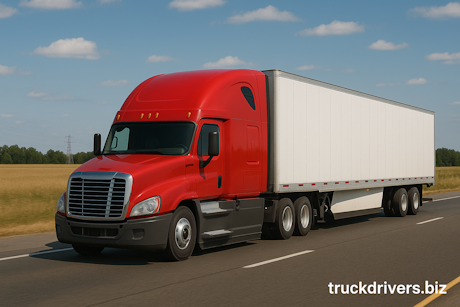Full News
Trucking Industry in the U.S.: Challenges and Opportunities in 2025
Sep 11, 2025
Administrator

truckdrivers.biz
The U.S. trucking sector remains the backbone of the national economy, moving more than 70% of all freight by volume. Despite economic uncertainty, demand for freight services continues to grow, fueled by e-commerce, construction projects, and seasonal agriculture shipments.
One of the main challenges for carriers today is the shortage of qualified CDL drivers. According to industry estimates, the gap already exceeds 80,000 drivers, and this number could double by the end of the decade. Companies are trying to solve the problem with sign-on bonuses, higher pay per mile, and flexible schedules, but competition for talent remains fierce.
Fuel prices are another sensitive factor. Diesel costs have risen steadily since summer, putting pressure on small and mid-sized carriers. While large fleets can offset expenses through fuel surcharges, independent owner-operators often face declining profit margins.
At the same time, new technologies are opening opportunities. Electric Class 8 trucks are gradually entering the market, supported by state subsidies and federal infrastructure programs. Autonomous vehicle testing also continues, though full adoption is still years away. Many logistics companies are investing in digital platforms that optimize dispatching, reduce empty miles, and increase transparency for shippers.
Regulatory changes also shape the business landscape. FMCSA is preparing stricter safety audits, while several states have introduced new emission rules that may affect older diesel trucks. Carriers must balance compliance with operational efficiency to stay competitive.
Looking ahead, experts believe the U.S. trucking industry will remain resilient. Despite challenges, the sector’s adaptability and key role in supply chains guarantee steady demand. For entrepreneurs, this means both risks and opportunities: those who modernize fleets, invest in drivers, and embrace technology will lead the market in the coming years.
One of the main challenges for carriers today is the shortage of qualified CDL drivers. According to industry estimates, the gap already exceeds 80,000 drivers, and this number could double by the end of the decade. Companies are trying to solve the problem with sign-on bonuses, higher pay per mile, and flexible schedules, but competition for talent remains fierce.
Fuel prices are another sensitive factor. Diesel costs have risen steadily since summer, putting pressure on small and mid-sized carriers. While large fleets can offset expenses through fuel surcharges, independent owner-operators often face declining profit margins.
At the same time, new technologies are opening opportunities. Electric Class 8 trucks are gradually entering the market, supported by state subsidies and federal infrastructure programs. Autonomous vehicle testing also continues, though full adoption is still years away. Many logistics companies are investing in digital platforms that optimize dispatching, reduce empty miles, and increase transparency for shippers.
Regulatory changes also shape the business landscape. FMCSA is preparing stricter safety audits, while several states have introduced new emission rules that may affect older diesel trucks. Carriers must balance compliance with operational efficiency to stay competitive.
Looking ahead, experts believe the U.S. trucking industry will remain resilient. Despite challenges, the sector’s adaptability and key role in supply chains guarantee steady demand. For entrepreneurs, this means both risks and opportunities: those who modernize fleets, invest in drivers, and embrace technology will lead the market in the coming years.